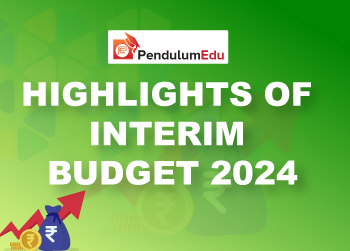Topic: Indian Economy/Financial Market
1. India’s merchandise exports rose by 9.03% in April 2025.
- The total export value reached $38.49 billion. Key contributors included engineering goods, petroleum products, and electronics.
- The trade deficit expanded to $26.42 billion in April. This was the highest level in five months.
- Imports increased at a faster pace than exports.
- Imports grew by 19.12% year-on-year, reaching $64.91 billion.
- The rise was mainly due to higher imports of crude oil and electronics.
- Crude oil imports jumped by 25.6%, totaling $20.7 billion. Gold imports also rose by 4.86%, reaching $3.09 billion.
- FIEO stressed the need for consistent trade policies and better logistics.
- They also called for early conclusion of free trade agreements with countries like the UK, US, EU, Oman, and GCC.
- Nine out of India’s top ten export categories saw growth in April.
- These included electronics, pharmaceuticals, ready-made garments, and plastics.
- Organic and inorganic chemicals were the only major exports to decline slightly.
- Imports of electronics, chemicals, and machinery also saw significant increases.
- In FY25, total goods exports stood at $437.42 billion. This marked a marginal increase of 0.08% from $437.07 billion in FY24.
Topic: Banking System
2. HDFC Bank has launched the ‘Biz+ Current Account’ to support the changing needs of Indian businesses.
- The account is designed to help enterprises manage their finances more efficiently.
- It offers core features such as cash handling, digital banking tools, and personalized support.
- Each account comes with access to a dedicated relationship manager for expert guidance.
- A wide range of bundled services is included to meet diverse banking requirements.
- New current account holders will receive free business and payment protection insurance.
- This coverage starts from day one and is valid for the first year.
- The insurance is meant to protect businesses from unexpected risks and disruptions.
- The Biz+ account has a tiered structure.
- It caters to different business phases—startup, growth, expansion, and diversification.
- Each tier provides benefits suited to the specific stage of business development.
- The account also offers industry-specific solutions.
- These are tailored for sectors such as manufacturing, trading, and services.
- Each segment gets features that address its unique operational needs.
Topic: Appointments
3. The government has appointed Dinesh Pant and Ratnakar Patnaik as Managing Directors of LIC.
- Their appointments will take effect from June 1, 2025, or from the date they assume office thereafter.
- Dinesh Pant currently serves as LIC’s Appointed Actuary.
- He also holds the position of Executive Director in charge of actuarial functions.
- Ratnakar Patnaik is the Executive Director for Investment – Front Office.
- He also serves as the Chief Investment Officer at LIC.
- Pant will remain in the role of MD until his retirement on May 31, 2027.
- His term may end earlier if the government issues further orders.
- Patnaik will serve as MD until his superannuation on March 31, 2028.
- His tenure is also subject to change if directed by the government.
- LIC’s current Managing Directors Jagannath Mukkavilli and Tablesh Pandey will retire at the end of May 2025.
- The leadership team at LIC consists of a CEO & MD, supported by four Managing Directors.


Topic: Appointments
4. Dr. Ajay Kumar has been appointed as the new Chairman of the Union Public Service Commission (UPSC).
- The appointment was made by President Droupadi Murmu.
- He is a retired IAS officer from the 1985 batch of the Kerala cadre.
- Dr. Kumar previously served as Defence Secretary from August 2019 to October 2022.
- His appointment follows the retirement of former UPSC Chairperson Preeti Sudan on April 29.
- The Department of Personnel and Training issued the appointment order.
- The order was made under Article 316(1) of the Indian Constitution.
- Dr. Kumar will officially begin his role once he assumes office.
- His tenure will continue until October 2027.
- He will complete his term upon reaching the age of 65.
- During his time as Defence Secretary, he helped establish the Chief of Defence Staff post in 2020.
- He also oversaw the rollout of the Agniveer recruitment scheme in 2022.
- Dr. Kumar is an alumnus of IIT Kanpur.
- He holds a PhD in business administration from the Carlson School of Management, University of Minnesota.
- UPSC is a constitutional body. It is headed by a Chairperson. It can have a maximum of 10 members.
- Article 315 to Article 323 of the Indian Constitution deals with Public Service Commissions for the Union and for the States.
- The chairman and other members of the Union Public Service Commission (UPSC) are appointed by the President of India.
- The members of UPSC hold officer for a term of six years or till they attain the age of 65 years, whichever is earlier.
Topic: Indian Economy/Financial Market
5. India’s wholesale price index (WPI)-based inflation fell to 0.85 per cent in April 2025.
- In March 2025, WPI inflation was 2.05 per cent.
- The Ministry of Commerce and Industry released the inflation data on 14 May.
- Inflation based on the WPI food index dropped to 2.55 per cent in April.
- This was down from 4.66 per cent in March.
- The Primary Articles category saw inflation decrease to 1.44 per cent in April.
- This was a decline from 0.76 per cent in the previous month.
- The fuel and power sector saw deflation of 2.18 per cent in April.
- This was a shift from a 0.2 per cent increase in March.
- Inflation in the manufactured products category dropped to 2.62 per cent in April.
- This was a decrease from 3.07 per cent in the previous month.
- The ministry noted that rising prices in food manufacturing, chemicals, transport equipment, and machinery contributed to the positive inflation rate in April.
- The WPI tracks price changes for goods traded in bulk between wholesalers and businesses.
- Unlike the Consumer Price Index (CPI), which tracks retail prices, the WPI focuses on factory gate prices and wholesale transactions.
Topic: Awards and Prizes
6. The 2025 World Food Prize awarded to a Brazilian microbiologist for her contributions to environmentally friendly agriculture.
- Brazilian scientist Mariangela Hungria has been honoured with the 2025 World Food Prize for her groundbreaking contributions to sustainable agriculture.
- She has been awarded for his pioneering work in developing organic seeds and soil treatments to reduce the use of chemical fertilizers and increase crop yield and nutrition.
- The award, carrying a $500,000 prize, was conferred by the World Food Prize Foundation on May 13, 2025.
- Over a 40-year career at Embrapa, Hungria pioneered the development of biological seed and soil treatments to reduce the use of synthetic fertilisers.
- National soybean production in Brazil rose from 15 million tonnes (1979) to 173 million tonnes due to the adoption of her innovations.
- Farmers in Brazil are estimated to save $40 billion annually through her biological nitrogen fixation techniques.
- This technology is a natural process in which naturally occurring microorganisms convert atmospheric nitrogen into forms that plant roots can absorb from the soil, reducing the need for synthetic fertilizers.
Topic: Reports and Indices
7. The Ministry of Statistics and Programme Implementation has released the first Monthly Bulletin of the updated Periodic Labour Force Survey (PLFS) for April 2025.
- The report presents revised employment and unemployment data using the new survey framework.
- It includes indicators like Labour Force Participation Rate (LFPR), Worker Population Ratio (WPR), and Unemployment Rate (UR).
- These figures are based on the Current Weekly Status of people aged 15 and above.
- The national LFPR in April 2025 was 55.6 per cent. Rural areas reported a LFPR of 58.0 per cent.
- Urban areas recorded an LFPR of 50.7 per cent. Male LFPR was 79.0 per cent in rural regions.
- In urban areas, male LFPR stood at 75.3 per cent. Female LFPR in rural regions was 38.2 per cent.
- The national WPR was 52.8 per cent. Rural WPR was higher at 55.4 per cent. Urban WPR was recorded at 47.4 per cent.
- The WPR for rural women was 36.8 per cent. In urban areas, the female WPR was 23.5 per cent.
- Overall, the female WPR stood at 32.5 per cent.
- The unemployment rate for individuals aged 15 and above was 5.1 per cent.
- Male unemployment was slightly higher at 5.2 per cent. Female unemployment stood at 5.0 per cent.
- These figures are the first released under the revamped PLFS methodology.
- The new system was introduced in January 2025. It uses a rotational panel design to gather data.
- Each selected household is visited once a month for four consecutive months.
- There is a 75 per cent overlap in first-stage sampling units from one month to the next.
- This approach increases the consistency and comparability of data.
- In April 2025, the survey covered 7,511 first-stage sampling units.
- Out of these, 4,140 were in rural areas. The remaining 3,371 were in urban areas.
- A total of 89,434 households were surveyed nationwide.
- The survey reached 3,80,838 individuals. Of these, 2,17,483 were from rural areas. Another 1,63,355 were from urban areas.
- The redesigned PLFS now provides quarterly labour data for rural India.
- Previously, quarterly estimates were only available for urban areas.
- The sample size per unit was increased from 8 households to 12.
- This change enhances the scope and depth of the survey.
Topic: Indian Economy/Financial Market
8. India is expected to grow by 6.3 per cent this fiscal year.
- This makes it the fastest-growing large economy.
- The UN’s mid-year update on the World Economic Situation and Prospects (WESP) projects India’s growth to slightly rise to 6.4 per cent next year.
- However, this is 0.3 per cent lower than the January projection.
- The UN report warns that the global economy is at a "precarious moment."
- This is due to rising trade tensions and uncertain policies.
- The WESP report showed that global economic prospects have worsened since January.
- India’s growth contrasts with the global rate of 2.4 per cent and the performance of other major economies.
- China is projected to grow by 4.6 per cent, and the US by 1.6 per cent.
- Germany’s economy is expected to shrink by -0.1 per cent.
- Japan’s growth is forecast at 0.7 per cent, and the EU’s growth rate is 1 per cent.
- India’s economic growth is driven by strong private consumption, public investment, and growing services exports.
- Inflation in India is expected to decrease from 4.9 per cent in 2024 to 4.3 per cent in 2025. This is within the central bank’s target range.
- Unemployment in India remains stable amid steady economic conditions.
- However, the report points to persistent gender disparities in employment.
- It stresses the need for more inclusivity in workforce participation.
- The WESP also highlighted risks to India’s export sector from potential US tariffs.
- Certain sectors, such as pharmaceuticals, electronics, semiconductors, energy, and copper, are currently exempt from these tariffs.
- However, these exemptions may not last.
- The IMF has projected India’s economy will grow by 6.2 per cent this year and 6.3 per cent next year.


 Previous
Previous 
 Latest
Latest 








Comments